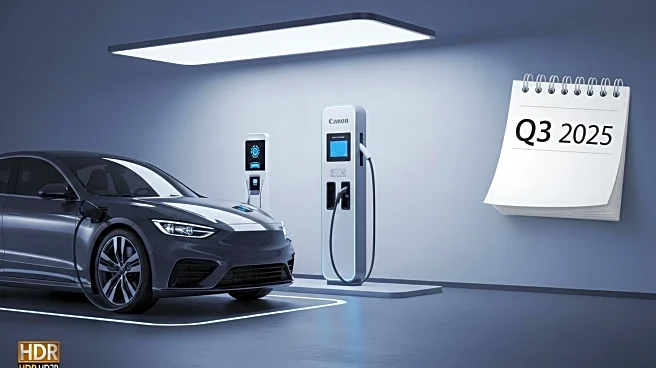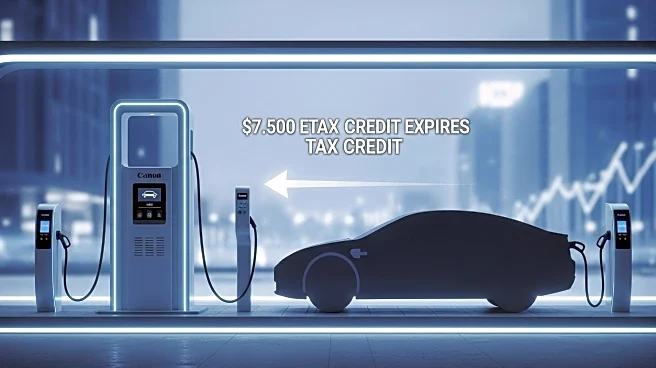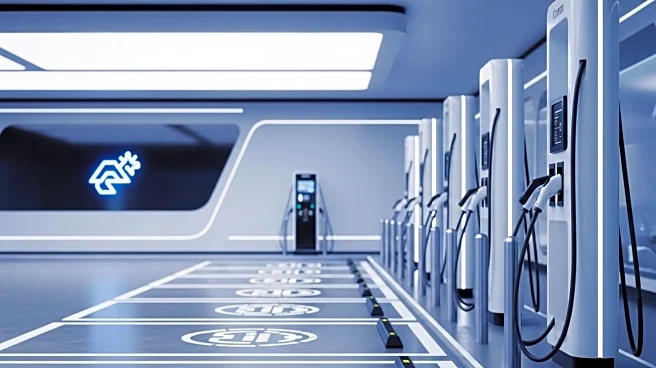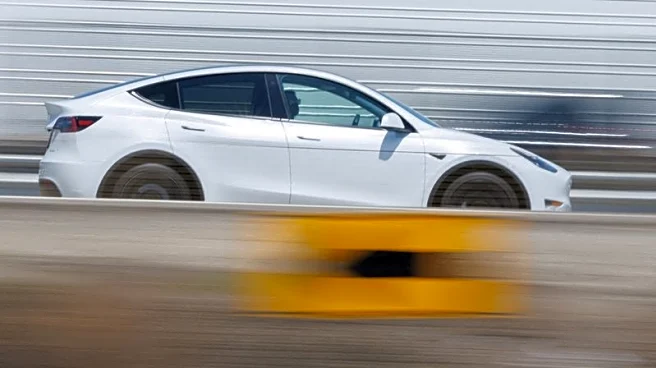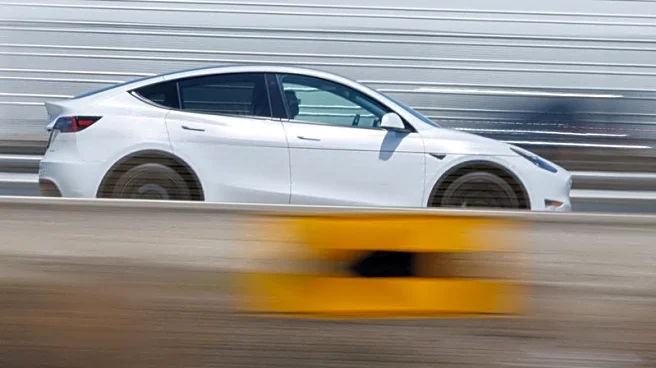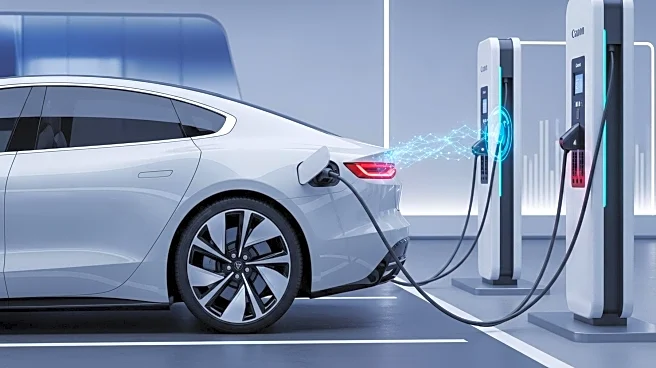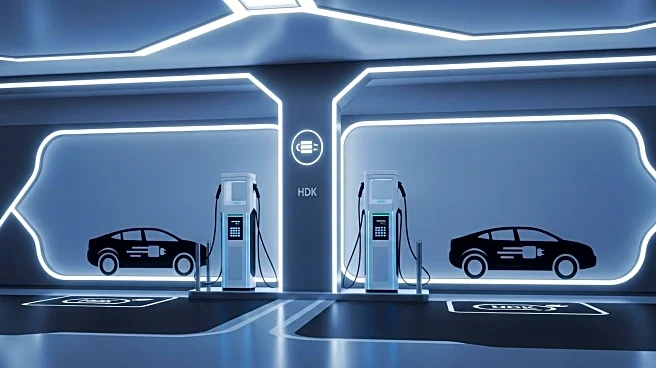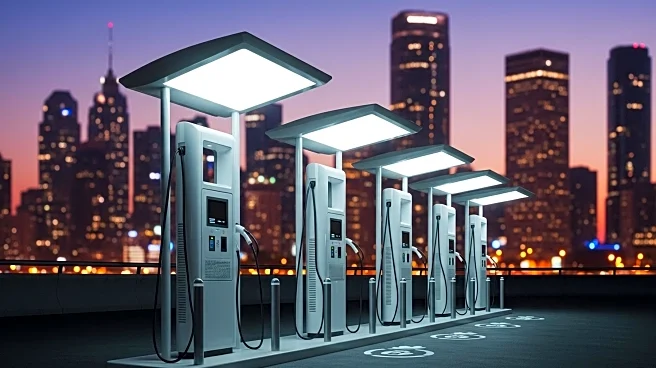What's Happening?
Tesla reported a record-breaking delivery of 497,099 vehicles in Q3 2025, surpassing its production of 447,450 units for the first time. This surge was largely driven by U.S. buyers rushing to take advantage of a federal EV tax credit that expired in October. The company successfully scaled production and adjusted its supply chain, reopening its Fremont lines and ramping up Cybertruck production at its Texas Gigafactory. Tesla's energy storage division also set a record by deploying 12.5 GWh, indicating eased supply constraints for battery packs.
Why It's Important?
The record deliveries highlight Tesla's ability to scale production and manage inventory effectively, positioning it as a leader in the EV market. The expiration of the federal tax credit may have pulled forward demand, potentially impacting future quarters. Competitors like GM and Ford also reported strong EV sales, indicating a growing market. Tesla's diversification into energy storage suggests a strategic shift that could stabilize revenue as the EV market matures. Analysts caution that demand may drop in Q4, but strong Chinese sales could mitigate this impact.
What's Next?
Tesla plans to release full financial results on October 22, 2025, which may provide guidance on Q4 and 2026. Analysts expect Q4 deliveries to decline due to the tax credit expiration, but energy storage deployments may continue to grow. Tesla's upcoming models, such as a refreshed Model Y and a next-generation compact car, could reignite growth. International expansion and new incentives in Europe or Asia could also influence future demand.
Beyond the Headlines
Tesla's record energy storage deployment highlights its diversification beyond vehicle sales, potentially smoothing revenue as the EV market matures. The company's strategic adjustments in production lines and supply chain management demonstrate its readiness to adapt to changing market conditions. The expiration of the U.S. tax credit may lead to a temporary demand gap, but Tesla's focus on energy storage and new models could offset this challenge.

